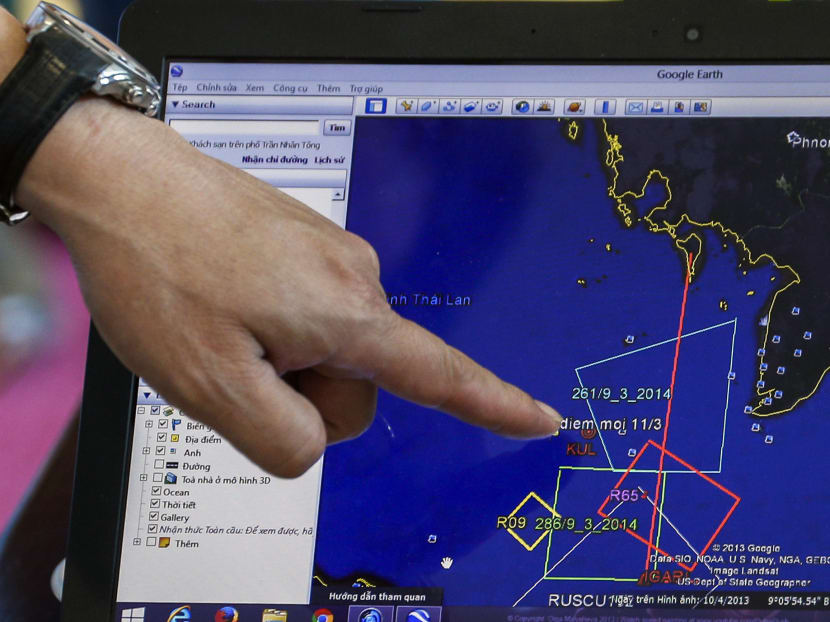Nuclear test experts to check if plane exploded
UNITED NATIONS — The head of the organisation that monitors the nuclear test ban treaty said yesterday (March 11) he has asked its experts to see if they detected an explosion at high altitude of the missing Malaysian Airlines plane.

A map of a flight plan is seen on a computer screen during a meeting before a mission to find the Malaysia Airlines flight MH370 that disappeared from radar screens in the early hours of Saturday, at Phu Quoc Airport on Phu Quoc Island March 10, 2014. Photo: Reuters
UNITED NATIONS — The head of the organisation that monitors the nuclear test ban treaty said yesterday (March 11) he has asked its experts to see if they detected an explosion at high altitude of the missing Malaysian Airlines plane.
Mr Lassina Zerbo, executive director of the Comprehensive Nuclear Test Ban Treaty Organization told a news conference that the CTBTO uses “infrasound” — or infrasonic sensors — to monitor the earth mainly for atmospheric nuclear explosions.
There is no sign of the missing Boeing 777 carrying 239 people, which lost contact over the sea between Malaysia and Vietnam early Saturday. Mr Zerbo said he asked the head of the CTBTO’s International Data Center to look at the data “and get back to me”.
Mr Zerbo said infrasound would be the best technology to check for an explosion on the missing plane if there was a monitoring station nearby, “or the explosion is at a level or at an amplitude that it could be detected”.
“There’s a possibility, it’s not absolute, that the technology like the Infrazone could be able to detect” an explosion, he said in response to a question.
Acoustic waves with very low frequencies that are inaudible to the human ear are called infrasound, according to the CTBTO’s website.
“Infrasound is produced by a variety of natural and man-made sources: Exploding volcanoes, earthquakes, meteors, storms and auroras in the natural world; nuclear, mining and large chemical explosions, as well as aircraft and rocket launches in the man-made arena,” the CTBTO said.
Infrasound monitoring is one of the four technologies used by the International Monitoring System (IMS) to verify compliance with the nuclear test ban treaty. The CTBTO said the construction of infrasound monitoring stations “has contributed to a revival of scientific interest in this technology”.
The IMS infrasound network is the only global monitoring network of its kind and when it is fully operational it will consist of 60 stations “situated strategically in 35 countries around the world”, the CTBTO said. It did not list the countries and completed stations. AP






